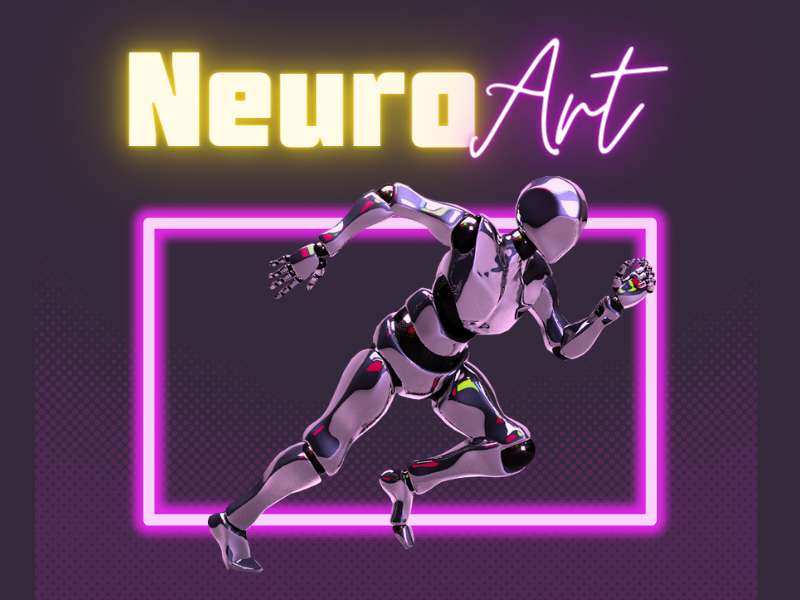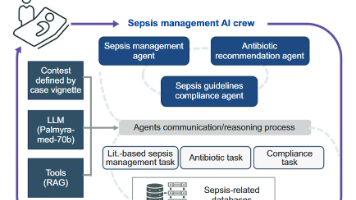NLP 与 Python:构建知识图谱实战案例
目前,大多数公司都在建立数据湖,这是一个中央数据库,它可以收集来自不同来源的各种类型的原始数据(包括结构化和非结构化数据)。例如,知识图谱可以替代您需要查阅的所有文件,以查找特定的信息。目前,最常用于此类任务的库是SpaCy,它是一种开源软件,用于高级自然语言处理,利用Cython(C+Python)进行加速。命名实体是“真实世界中的对象”(例如人、国家、产品、日期),模型可以在文档中识别各种类型
概括
积累了一两周,好久没做笔记了,今天,我将展示在之前两周的实战经验:如何使用 Python 和自然语言处理构建知识图谱。

网络图是一种数学结构,用于表示点之间的关系,可通过无向/有向图结构进行可视化展示。它是一种将相关节点映射的数据库形式。
知识库是来自不同来源信息的集中存储库,如维基百科、百度百科等。
知识图谱是一种采用图形数据模型的知识库。简单来说,它是一种特殊类型的网络图,用于展示现实世界实体、事实、概念和事件之间的关系。2012年,谷歌首次使用“知识图谱”这个术语,用于介绍他们的模型。

目前,大多数公司都在建立数据湖,这是一个中央数据库,它可以收集来自不同来源的各种类型的原始数据(包括结构化和非结构化数据)。因此,人们需要工具来理解所有这些不同信息的意义。知识图谱越来越受欢迎,因为它可以简化大型数据集的探索和发现。简单来说,知识图谱将数据和相关元数据连接起来,因此可以用来构建组织信息资产的全面表示。例如,知识图谱可以替代您需要查阅的所有文件,以查找特定的信息。
知识图谱被视为自然语言处理领域的一部分,因为要构建“知识”,需要进行“语义增强”过程。由于没有人想要手动执行此任务,因此我们需要使用机器和自然语言处理算法来完成此任务。
我将解析维基百科并提取一个页面,用作本教程的数据集(下面的链接)。
俄乌战争 - 维基百科 俄乌战争是俄罗斯与俄罗斯支持的分离主义者之间持续的国际冲突,以及… en.wikipedia.org
特别是将通过:
- 设置:使用维基百科API进行网页爬取以读取包和数据。
- NLP使用SpaCy:对文本进行分句、词性标注、依存句法分析和命名实体识别。
- 提取实体及其关系:使用Textacy库来识别实体并建立它们之间的关系。
- 网络图构建:使用NetworkX库来创建和操作图形结构。
- 时间轴图:使用DateParser库来解析日期信息并生成时间轴图。
设置
首先导入以下库:
## for data
import pandas as pd #1.1.5
import numpy as np #1.21.0
## for plotting
import matplotlib.pyplot as plt #3.3.2
## for text
import wikipediaapi #0.5.8
import nltk #3.8.1
import re
## for nlp
import spacy #3.5.0
from spacy import displacy
import textacy #0.12.0
## for graph
import networkx as nx #3.0 (also pygraphviz==1.10)
## for timeline
import dateparser #1.1.7
Wikipedia-api是一个Python库,可轻松解析Wikipedia页面。我们将使用这个库来提取所需的页面,但会排除页面底部的所有“注释”和“参考文献”内容。

简单地写出页面的名称:
topic = "Russo-Ukrainian War"
wiki = wikipediaapi.Wikipedia('en')
page = wiki.page(topic)
txt = page.text[:page.text.find("See also")]
txt[0:500] + " ..."

通过从文本中识别和提取subjects-actions-objects来绘制历史事件的关系图谱(因此动词是关系)。
自然语言处理
要构建知识图谱,首先需要识别实体及其关系。因此,需要使用自然语言处理技术处理文本数据集。
目前,最常用于此类任务的库是SpaCy,它是一种开源软件,用于高级自然语言处理,利用Cython(C+Python)进行加速。SpaCy使用预训练的语言模型对文本进行标记化,并将其转换为“文档”对象,该对象包含模型预测的所有注释。
#python -m spacy download en_core_web_sm
nlp = spacy.load("en_core_web_sm")
doc = nlp(txt)
NLP模型的第一个输出是句子分割(中文有自己的分词规则):即确定句子的起始和结束位置的问题。通常,它是通过基于标点符号对段落进行分割来完成的。现在我们来看看SpaCy将文本分成了多少个句子:
# from text to a list of sentences
lst_docs = [sent for sent in doc.sents]
print("tot sentences:", len(lst_docs))

现在,对于每个句子,我们将提取实体及其关系。为了做到这一点,首先需要了解词性标注(POS):即用适当的语法标签标记句子中的每个单词的过程。以下是可能标记的完整列表(截至今日):
- ADJ: 形容词,例如big,old,green,incomprehensible,first
- ADP: 介词,例如in,to,during
- ADV: 副词,例如very,tomorrow,down,where,there
- AUX: 助动词,例如is,has(done),will(do),should(do)
- CONJ: 连词,例如and,or,but
- CCONJ: 并列连词,例如and,or,but
- DET: 限定词,例如a,an,the
- INTJ: 感叹词,例如psst,ouch,bravo,hello
- NOUN: 名词,例如girl,cat,tree,air,beauty
- NUM: 数词,例如1,2017,one,seventy-seven,IV,MMXIV
- PART: 助词,例如’s,not
- PRON: 代词,例如I,you,he,she,myself,themselves,somebody
- PROPN: 专有名词,例如Mary,John,London,NATO,HBO
- PUNCT: 标点符号,例如.,(,),?
- SCONJ: 从属连词,例如if,while,that
- SYM: 符号,例如$,%,§,©,+,-,×,÷,=,😃,表情符号
- VERB: 动词,例如run,runs,running,eat,ate,eating
- X: 其他,例如sfpksdpsxmsa
- SPACE: 空格,例如
仅有词性标注是不够的,模型还会尝试理解单词对之间的关系。这个任务称为依存句法分析(Dependency Parsing,DEP)。以下是可能的标签完整列表(截至今日)。
- ACL:作为名词从句的修饰语
- ACOMP:形容词补语
- ADVCL:状语从句修饰语
- ADVMOD:状语修饰语
- AGENT:主语中的动作执行者
- AMOD:形容词修饰语
- APPOS:同位语
- ATTR:主谓结构中的谓语部分
- AUX:助动词
- AUXPASS:被动语态中的助动词
- CASE:格标记
- CC:并列连词
- CCOMP:从句补足语
- COMPOUND:复合修饰语
- CONJ:连接词
- CSUBJ:主语从句
- CSUBJPASS:被动语态中的主语从句
- DATIVE:与双宾语动词相关的间接宾语
- DEP:未分类的依赖
- DET:限定词
- DOBJ:直接宾语
- EXPL:人称代词
- INTJ:感叹词
- MARK:标记
- META:元素修饰语
- NEG:否定修饰语
- NOUNMOD:名词修饰语
- NPMOD:名词短语修饰语
- NSUBJ:名词从句主语
- NSUBJPASS:被动语态中的名词从句主语
- NUMMOD:数字修饰语
- OPRD:宾语补足语
- PARATAXIS:并列结构
- PCOMP:介词的补足语
- POBJ:介词宾语
- POSS:所有格修饰语
- PRECONJ:前置连词
- PREDET:前置限定词
- PREP:介词修饰语
- PRT:小品词
- PUNCT:标点符号
- QUANTMOD:量词修饰语
- RELCL:关系从句修饰语
- ROOT:句子主干
- XCOMP:开放性从句补足语
举个例子来理解POS标记和DEP解析:
# take a sentence
i = 3
lst_docs[i]

检查 NLP 模型预测的 POS 和 DEP 标签:
for token in lst_docs[i]:
print(token.text, "-->", "pos: "+token.pos_, "|", "dep: "+token.dep_, "")

_SpaCy提供了一个图形工具来可视化这些注释:
from spacy import displacy
displacy.render(lst_docs[i], style="dep", options={"distance":100})

最重要的标记是动词 ( POS=VERB ),因为它是句子中含义的词根 ( DEP=ROOT )。

助词,如副词和副词 ( POS=ADV/ADP ),通常作为修饰语 ( *DEP=mod ) 与动词相关联,因为它们可以修饰动词的含义。例如,“ travel to ”和“ travel from ”具有不同的含义,即使词根相同(“ travel ”)。

在与动词相连的单词中,必须有一些名词(POS=PROPN/NOUN)作为句子的主语和宾语( *DEP=nsubj/obj )。

名词通常位于形容词 ( POS=ADJ ) 附近,作为其含义的修饰语 ( DEP=amod )。例如,在“好人”和“坏人”中,形容词赋予名词_“人”相反的含义。_

SpaCy执行的另一个很酷的任务是命名实体识别(NER)。命名实体是“真实世界中的对象”(例如人、国家、产品、日期),模型可以在文档中识别各种类型的命名实体。以下是可能的所有标签的完整列表(截至今日):
- 人名: 包括虚构人物。
- 国家、宗教或政治团体:民族、宗教或政治团体。
- 地点:建筑、机场、高速公路、桥梁等。
- 公司、机构等:公司、机构等。
- 地理位置:国家、城市、州。
- 地点:非国家地理位置,山脉、水域等。
- 产品:物体、车辆、食品等(不包括服务)。
- 事件:命名飓风、战斗、战争、体育赛事等。
- 艺术作品:书籍、歌曲等的标题。
- 法律:成为法律的指定文件。
- 语言:任何命名的语言。
- 日期:绝对或相对日期或期间。
- 时间:小于一天的时间。
- 百分比:百分比,包括“%”。
- 货币:货币价值,包括单位。
- 数量:衡量重量或距离等。
- 序数: “第一”,“第二”等。
- 基数:不属于其他类型的数字。
for tag in lst_docs[i].ents:
print(tag.text, f"({tag.label_})")

或者使用SpaCy图形工具更好:
displacy.render(lst_docs[i], style="ent")

这对于我们想要向知识图谱添加多个属性的情况非常有用。
接下来,使用NLP模型预测的标签,我们可以提取实体及其关系。
实体和关系抽取
这个想法很简单,但实现起来可能会有些棘手。对于每个句子,我们将提取主语和宾语以及它们的修饰语、复合词和它们之间的标点符号。
可以通过两种方式完成:
- 手动方式:可以从基准代码开始,该代码可能必须稍作修改并针对您特定的数据集/用例进行调整。
def extract_entities(doc):
a, b, prev_dep, prev_txt, prefix, modifier = "", "", "", "", "", ""
for token in doc:
if token.dep_ != "punct":
## prexif --> prev_compound + compound
if token.dep_ == "compound":
prefix = prev_txt +" "+ token.text if prev_dep == "compound" else token.text
## modifier --> prev_compound + %mod
if token.dep_.endswith("mod") == True:
modifier = prev_txt +" "+ token.text if prev_dep == "compound" else token.text
## subject --> modifier + prefix + %subj
if token.dep_.find("subj") == True:
a = modifier +" "+ prefix + " "+ token.text
prefix, modifier, prev_dep, prev_txt = "", "", "", ""
## if object --> modifier + prefix + %obj
if token.dep_.find("obj") == True:
b = modifier +" "+ prefix +" "+ token.text
prev_dep, prev_txt = token.dep_, token.text
# clean
a = " ".join([i for i in a.split()])
b = " ".join([i for i in b.split()])
return (a.strip(), b.strip())
# The relation extraction requires the rule-based matching tool,
# an improved version of regular expressions on raw text.
def extract_relation(doc, nlp):
matcher = spacy.matcher.Matcher(nlp.vocab)
p1 = [{'DEP':'ROOT'},
{'DEP':'prep', 'OP':"?"},
{'DEP':'agent', 'OP':"?"},
{'POS':'ADJ', 'OP':"?"}]
matcher.add(key="matching_1", patterns=[p1])
matches = matcher(doc)
k = len(matches) - 1
span = doc[matches[k][1]:matches[k][2]]
return span.text
让我们在这个数据集上试试看,看看通常的例子:
## extract entities
lst_entities = [extract_entities(i) for i in lst_docs]
## example
lst_entities[i]

## extract relations
lst_relations = [extract_relation(i,nlp) for i in lst_docs]
## example
lst_relations[i]

## extract attributes (NER)
lst_attr = []
for x in lst_docs:
attr = ""
for tag in x.ents:
attr = attr+tag.text if tag.label_=="DATE" else attr+""
lst_attr.append(attr)
## example
lst_attr[i]

第二种方法是使用Textacy,这是一个基于SpaCy构建的库,用于扩展其核心功能。这种方法更加用户友好,通常也更准确。
## extract entities and relations
dic = {"id":[], "text":[], "entity":[], "relation":[], "object":[]}
for n,sentence in enumerate(lst_docs):
lst_generators = list(textacy.extract.subject_verb_object_triples(sentence))
for sent in lst_generators:
subj = "_".join(map(str, sent.subject))
obj = "_".join(map(str, sent.object))
relation = "_".join(map(str, sent.verb))
dic["id"].append(n)
dic["text"].append(sentence.text)
dic["entity"].append(subj)
dic["object"].append(obj)
dic["relation"].append(relation)
## create dataframe
dtf = pd.DataFrame(dic)
## example
dtf[dtf["id"]==i]

让我们也使用 NER 标签(即日期)提取属性:
## extract attributes
attribute = "DATE"
dic = {"id":[], "text":[], attribute:[]}
for n,sentence in enumerate(lst_docs):
lst = list(textacy.extract.entities(sentence, include_types={attribute}))
if len(lst) > 0:
for attr in lst:
dic["id"].append(n)
dic["text"].append(sentence.text)
dic[attribute].append(str(attr))
else:
dic["id"].append(n)
dic["text"].append(sentence.text)
dic[attribute].append(np.nan)
dtf_att = pd.DataFrame(dic)
dtf_att = dtf_att[~dtf_att[attribute].isna()]
## example
dtf_att[dtf_att["id"]==i]

已经提取了“知识”,接下来可以构建图表了。
网络图
Python标准库中用于创建和操作图网络的是NetworkX。我们可以从整个数据集开始创建图形,但如果节点太多,可视化将变得混乱:
## create full graph
G = nx.from_pandas_edgelist(dtf, source="entity", target="object",
edge_attr="relation",
create_using=nx.DiGraph())
## plot
plt.figure(figsize=(15,10))
pos = nx.spring_layout(G, k=1)
node_color = "skyblue"
edge_color = "black"
nx.draw(G, pos=pos, with_labels=True, node_color=node_color,
edge_color=edge_color, cmap=plt.cm.Dark2,
node_size=2000, connectionstyle='arc3,rad=0.1')
nx.draw_networkx_edge_labels(G, pos=pos, label_pos=0.5,
edge_labels=nx.get_edge_attributes(G,'relation'),
font_size=12, font_color='black', alpha=0.6)
plt.show()

知识图谱可以让我们从大局的角度看到所有事物的相关性,但是如果直接看整张图就没有什么用处。因此,最好根据我们所需的信息应用一些过滤器。对于这个例子,我将只选择涉及最常见实体的部分(基本上是最连接的节点):
dtf["entity"].value_counts().head()

## filter
f = "Russia"
tmp = dtf[(dtf["entity"]==f) | (dtf["object"]==f)]
## create small graph
G = nx.from_pandas_edgelist(tmp, source="entity", target="object",
edge_attr="relation",
create_using=nx.DiGraph())
## plot
plt.figure(figsize=(15,10))
pos = nx.nx_agraph.graphviz_layout(G, prog="neato")
node_color = ["red" if node==f else "skyblue" for node in G.nodes]
edge_color = ["red" if edge[0]==f else "black" for edge in G.edges]
nx.draw(G, pos=pos, with_labels=True, node_color=node_color,
edge_color=edge_color, cmap=plt.cm.Dark2,
node_size=2000, node_shape="o", connectionstyle='arc3,rad=0.1')
nx.draw_networkx_edge_labels(G, pos=pos, label_pos=0.5,
edge_labels=nx.get_edge_attributes(G,'relation'),
font_size=12, font_color='black', alpha=0.6)
plt.show()

上面的效果已经不错了。如果想让它成为 3D 的话,可以使用以下代码:
from mpl_toolkits.mplot3d import Axes3D
fig = plt.figure(figsize=(15,10))
ax = fig.add_subplot(111, projection="3d")
pos = nx.spring_layout(G, k=2.5, dim=3)
nodes = np.array([pos[v] for v in sorted(G) if v!=f])
center_node = np.array([pos[v] for v in sorted(G) if v==f])
edges = np.array([(pos[u],pos[v]) for u,v in G.edges() if v!=f])
center_edges = np.array([(pos[u],pos[v]) for u,v in G.edges() if v==f])
ax.scatter(*nodes.T, s=200, ec="w", c="skyblue", alpha=0.5)
ax.scatter(*center_node.T, s=200, c="red", alpha=0.5)
for link in edges:
ax.plot(*link.T, color="grey", lw=0.5)
for link in center_edges:
ax.plot(*link.T, color="red", lw=0.5)
for v in sorted(G):
ax.text(*pos[v].T, s=v)
for u,v in G.edges():
attr = nx.get_edge_attributes(G, "relation")[(u,v)]
ax.text(*((pos[u]+pos[v])/2).T, s=attr)
ax.set(xlabel=None, ylabel=None, zlabel=None,
xticklabels=[], yticklabels=[], zticklabels=[])
ax.grid(False)
for dim in (ax.xaxis, ax.yaxis, ax.zaxis):
dim.set_ticks([])
plt.show()

需要注意一点,图形网络可能很有用且漂亮,但它不是本教程的重点。知识图谱最重要的部分是“知识”(文本处理),然后可以在数据帧、图形或其他图表上显示结果。例如,我可以使用NER识别的日期来构建时间轴图。
时间轴图
首先,需要将被识别为“日期”的字符串转换为日期时间格式。DateParser库可以解析几乎在网页上常见的任何字符串格式中的日期。
def utils_parsetime(txt):
x = re.match(r'.*([1-3][0-9]{3})', txt) #<--check if there is a year
if x is not None:
try:
dt = dateparser.parse(txt)
except:
dt = np.nan
else:
dt = np.nan
return dt
将它应用于属性的数据框:
dtf_att["dt"] = dtf_att["date"].apply(lambda x: utils_parsetime(x))
## example
dtf_att[dtf_att["id"]==i]

将把它与实体关系的主要数据框结合起来:
tmp = dtf.copy()
tmp["y"] = tmp["entity"]+" "+tmp["relation"]+" "+tmp["object"]
dtf_att = dtf_att.merge(tmp[["id","y"]], how="left", on="id")
dtf_att = dtf_att[~dtf_att["y"].isna()].sort_values("dt",
ascending=True).drop_duplicates("y", keep='first')
dtf_att.head()

最后,我可以绘制时间轴(绘制完整的图表可能不会用到):
dates = dtf_att["dt"].values
names = dtf_att["y"].values
l = [10,-10, 8,-8, 6,-6, 4,-4, 2,-2]
levels = np.tile(l, int(np.ceil(len(dates)/len(l))))[:len(dates)]
fig, ax = plt.subplots(figsize=(20,10))
ax.set(title=topic, yticks=[], yticklabels=[])
ax.vlines(dates, ymin=0, ymax=levels, color="tab:red")
ax.plot(dates, np.zeros_like(dates), "-o", color="k", markerfacecolor="w")
for d,l,r in zip(dates,levels,names):
ax.annotate(r, xy=(d,l), xytext=(-3, np.sign(l)*3),
textcoords="offset points",
horizontalalignment="center",
verticalalignment="bottom" if l>0 else "top")
plt.xticks(rotation=90)
plt.show()

过滤特定时间:
yyyy = "2022"
dates = dtf_att[dtf_att["dt"]>yyyy]["dt"].values
names = dtf_att[dtf_att["dt"]>yyyy]["y"].values
l = [10,-10, 8,-8, 6,-6, 4,-4, 2,-2]
levels = np.tile(l, int(np.ceil(len(dates)/len(l))))[:len(dates)]
fig, ax = plt.subplots(figsize=(20,10))
ax.set(title=topic, yticks=[], yticklabels=[])
ax.vlines(dates, ymin=0, ymax=levels, color="tab:red")
ax.plot(dates, np.zeros_like(dates), "-o", color="k", markerfacecolor="w")
for d,l,r in zip(dates,levels,names):
ax.annotate(r, xy=(d,l), xytext=(-3, np.sign(l)*3),
textcoords="offset points",
horizontalalignment="center",
verticalalignment="bottom" if l>0 else "top")
plt.xticks(rotation=90)
plt.show()

提取“知识”后,可以根据自己喜欢的风格重新绘制它。
结论
本文是关于**如何使用 Python 构建知识图谱的教程。**从维基百科解析的数据使用了几种 NLP 技术来提取“知识”(即实体和关系)并将其存储在网络图对象中。
利用 NLP 和知识图来映射来自多个来源的相关数据并找到对业务有用的见解。试想一下,将这种模型应用于与单个实体(即 Apple Inc)相关的所有文档(即财务报告、新闻、推文)可以提取多少价值。我们可以快速了解与该实体直接相关的所有事实、人员和公司。然后,通过扩展网络,即使信息不直接连接到起始实体 (A — > B — > C)。
更多推荐
 已为社区贡献1条内容
已为社区贡献1条内容








所有评论(0)